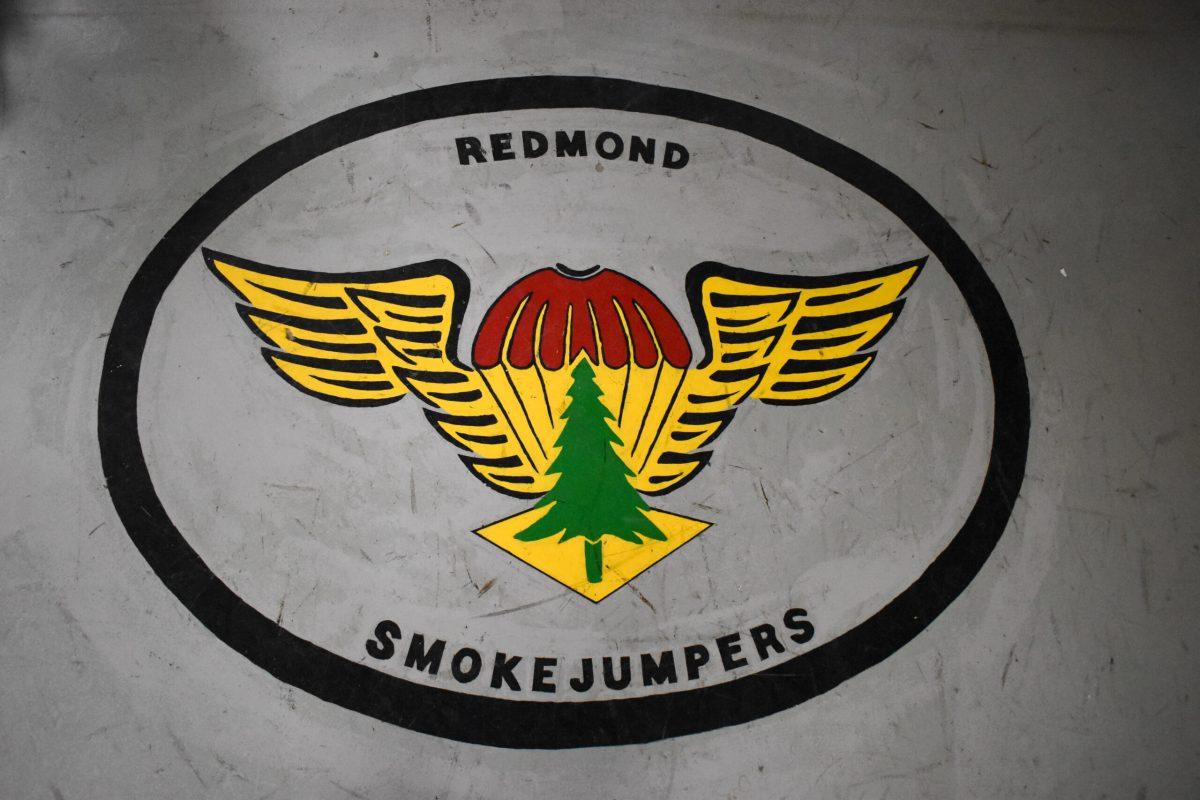Sarah Lightley/The Broadside
It’s a normal day that started out with physical training and rigging packs, the alarm sounds and the adrenaline starts pumping.
Tony Johnson, the Redmond Smokejumper Base Manager and a smokejumper of 22 years, describes what it’s like to be a smokejumper at the Redmond Air Center.
“We will get a call from dispatch saying we have a jump request for you,” Johnson said. “Then we will sound the alarm.”
The 50 smokejumpers will head to the ready room, where the first 10 on the list will start suiting up.

“The spotters will come to get the request and get the maps and figure out where the fire is at. The pilots will come over and start to get the plane ready to go,” Johnson said.
“We are generally suited up in five minutes, from the time the bell goes off to the time we are ready for spotter check,” he said. A spotter is in charge of the smokejumper assignment and is responsible for communicating with dispatch, selecting a jumpspot and positioning jumpers to exit the plane.
After the jumpers are given the go-ahead from the spotters, 10 smokejumpers get on the plane in sequential order, the tenth on the list in the back of the plane, and the first jumper on the list sitting next to the door.
The rookies start their training in mid-May, and the returning jumpers start their training and refresher courses in mid-March.
“The rookie training is about five weeks long. First-week is field skills, we take them out into the woods and camp. They do tree climbing, chain saw work, line digging, and a hike with an 85-pound pack over rough terrain,” Johnson said.
“The second week we put them through the units, which includes simulated exits out of the plane, plus let downs, parachute landing rolls and parachute manipulation. Then, weeks three to five are spent doing live jumps (25 total),” he said.


The skills learned in this training will be used to fight a wildfire. After the jump plane arrives over the fire, the spotter would check the wind patterns to make sure the smokejumper/parachute drifts into the targeted area.
The smokejumping world has changed from the round parachutes to a design resembling a square called Ram-Air.
“In the general parachuting world, nobody is jumping with round parachutes anymore,” Johnson said.

Johnson said, “We throw the rounds out at fifteen hundred feet” (round parachutes) and the “Ram-Air’s” at three thousand feet (square parachutes).”
“We will line the fire and mop it up and make sure it is completely out because most fires we jump are remote and they don’t want to have anyone else walk in there (to check on the fire),” he said.
The smokejumpers check to make sure the entire fire is out before leaving the area.
“Then we put 110 pounds of gear on our backs and walk to the nearest spot that a truck can get to us,” Johnson said.

To be hired as a smokejumper at the Redmond Air Center you need a minimum of 90 days of wildland fire service, which can be obtained through time on a hotshot crew, engine crew, etc.
“It will probably take you four to five years of wildland fire experience to actually get qualified to be hired,” Johnson said.
Some people jump because they are looking for adventure, and some people just like being outside. A career as a smokejumper has variety, “you show up to work and you never know what is going to happen that day.”
“With smokejumping it’s your fire, most of the time you are there from the beginning, middle, and end,” said Johnson.








